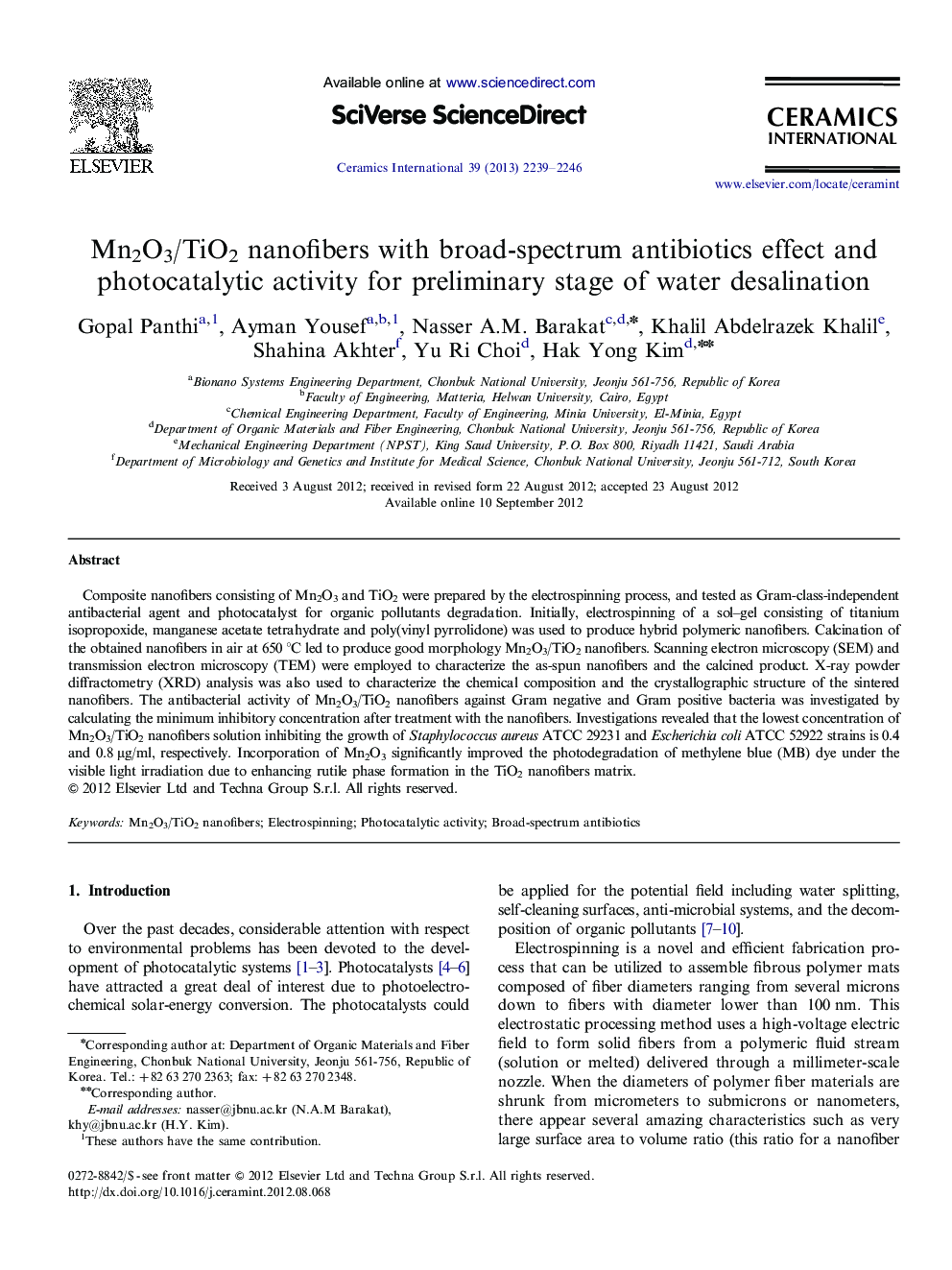| Article ID | Journal | Published Year | Pages | File Type |
|---|---|---|---|---|
| 10626037 | Ceramics International | 2013 | 8 Pages |
Abstract
Composite nanofibers consisting of Mn2O3 and TiO2 were prepared by the electrospinning process, and tested as Gram-class-independent antibacterial agent and photocatalyst for organic pollutants degradation. Initially, electrospinning of a sol-gel consisting of titanium isopropoxide, manganese acetate tetrahydrate and poly(vinyl pyrrolidone) was used to produce hybrid polymeric nanofibers. Calcination of the obtained nanofibers in air at 650 °C led to produce good morphology Mn2O3/TiO2 nanofibers. Scanning electron microscopy (SEM) and transmission electron microscopy (TEM) were employed to characterize the as-spun nanofibers and the calcined product. X-ray powder diffractometry (XRD) analysis was also used to characterize the chemical composition and the crystallographic structure of the sintered nanofibers. The antibacterial activity of Mn2O3/TiO2 nanofibers against Gram negative and Gram positive bacteria was investigated by calculating the minimum inhibitory concentration after treatment with the nanofibers. Investigations revealed that the lowest concentration of Mn2O3/TiO2 nanofibers solution inhibiting the growth of Staphylococcus aureus ATCC 29231 and Escherichia coli ATCC 52922 strains is 0.4 and 0.8 μg/ml, respectively. Incorporation of Mn2O3 significantly improved the photodegradation of methylene blue (MB) dye under the visible light irradiation due to enhancing rutile phase formation in the TiO2 nanofibers matrix.
Related Topics
Physical Sciences and Engineering
Materials Science
Ceramics and Composites
Authors
Gopal Panthi, Ayman Yousef, Nasser A.M. Barakat, Khalil Abdelrazek Khalil, Shahina Akhter, Yu Ri Choi, Hak Yong Kim,
